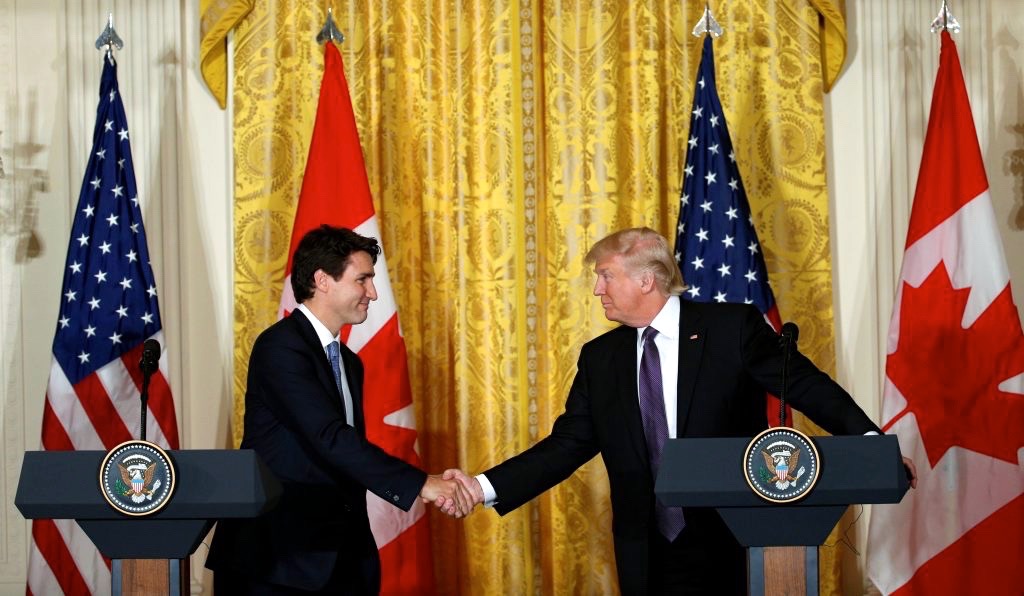If Canada Wants Free Trade, She Should Practice It
If free trade translates to regulations for gender, indigenous groups, and climate change, you might be in Canada. Those are, in fact, the stated objectives of Canadian Prime Minister Justin Trudeau when negotiating the North American Free Trade Agreement (NAFTA).
Despite the obvious confusion on the part of Trudeau, petty rhetoric and superficial media coverage regarding NAFTA have fostered a false dichotomy: either you support the agreement or you oppose free trade. Not only does that fallacy wrongfully pit Trudeau and US President Donald Trump against each other as ideological flag bearers (liberalism versus protectionism), it deflects from the concerning anti-trade policy trend in both nations.
As Max Gulker of AIER has noted, NAFTA is best characterized as a deal for managed or crony trade. Yes, NAFTA has enabled better coordination between Canada, Mexico, and the United States, but let’s not kid ourselves that its hundreds of pages and more than 2,200 articles amount to three countries removing impediments to free enterprise.
NAFTA disputes, unfortunately, revolve around protected industries and their lobbying efforts. Even the Canadian Union of Public Employees has jumped on the bandwagon to protect “health care, energy, and public education.”
If you read the White House’s “Summary of Objectives for the NAFTA Renegotiation” (PDF), you will find that some of it favors trade liberalization, and some does not. The Canadian state broadcaster, however, quickly identified three key areas of disagreement: (1) mandated access to local and state government contracts in the United States, (2) anti-dumping efforts against Canada’s subsidized softwood lumber, and (3) Canada’s “supply management system” for dairy, poultry, and eggs.
The first is a awkward, since it is a matter of federalism, and Canada is guilty of the same error (PDF, p.15). Localities would be prudent to spend taxpayer dollars on the most cost-effective suppliers, but that is not in the hands of the Trump administration.
The second is self defeating from Trump. Yes, the Canadians sell public land use for milling at below market price, along with a host of other subsidies. However, that is just Canadians giving their precious resources away to Americans at a low price. It might undermine some businesses in the United States, but it lowers costs across the broader economy, at the expense of the Canadian taxpayer.
Finally, the dispute over Canada’s centrally planned dairy cartel places Trump firmly in the free-trade camp. Canada imposes 270 percent tariffs on milk exports, essentially blocking them, and then offloads other surpluses when it is convenient. As Terence Corcoran of the Financial Post has written, Canada’s supply-management regime depends “on a deeply incomprehensible system of laws, regulations, and backroom secrecy whose overall purpose is to keep consumers in the dark and make sure they continue to pay high prices that subsidize farmers and associated supply-chain corporations.… [US dairy interests] are right to complain.”
According to the latest edition of the Fraser Institute’s “Economic Freedom of the World” report, Canada and the United States are neck and neck regarding freedom to trade internationally: 7.8 versus 7.56 respectively on a score out of 10. The United States performs worst on the freedom of people to travel to the country (legally) and engage in trade, and Canada performs worst in tariff variation. In other words, Canada has a strong preponderance towards industry favoritism, allowing some goods in with low or no tariffs, while whacking other goods heavily, presumably given those industries’ high degree of political sway.
What is most troubling from the Fraser Institute data, and oft forgotten, is that both Canada and the United States have fallen markedly in their grade for free trade in the past 30 years. Even with NAFTA, they have less liberal international-trade regimes. Canada also has a myriad of inter-provincial barriers to take care of, as documented by Pierre Lemieux of the Atlantic Institute for Market Studies.
Instead of resisting Trump’s requests regarding subsidies and market cartelization, Canada could meet him and then go on the offense and target pressure at many of the United States’ own protectionist measures. In contrast to the “progressive” lobbying for protected groups, it would benefit Canadian taxpayers and consumers alike.











